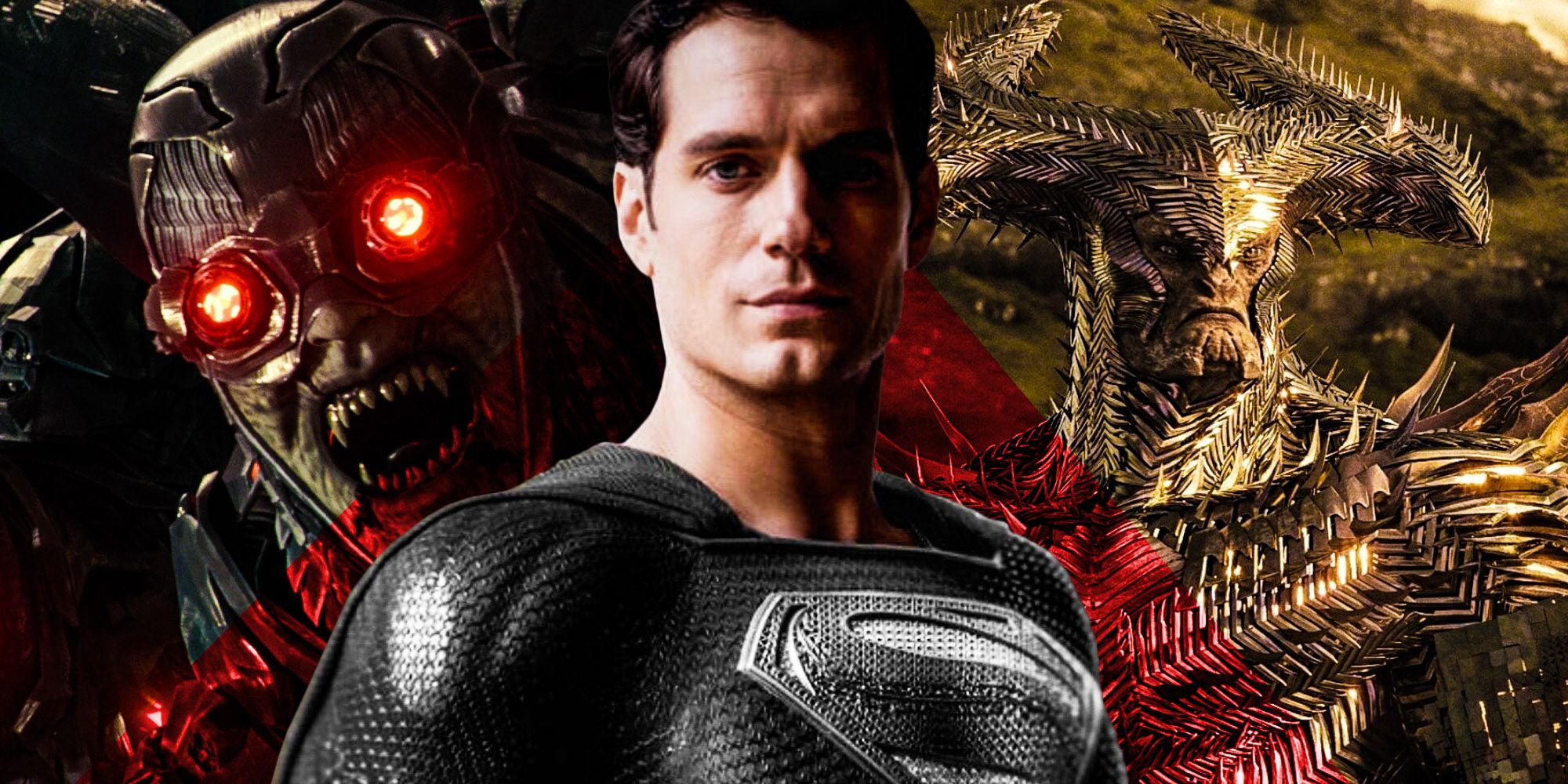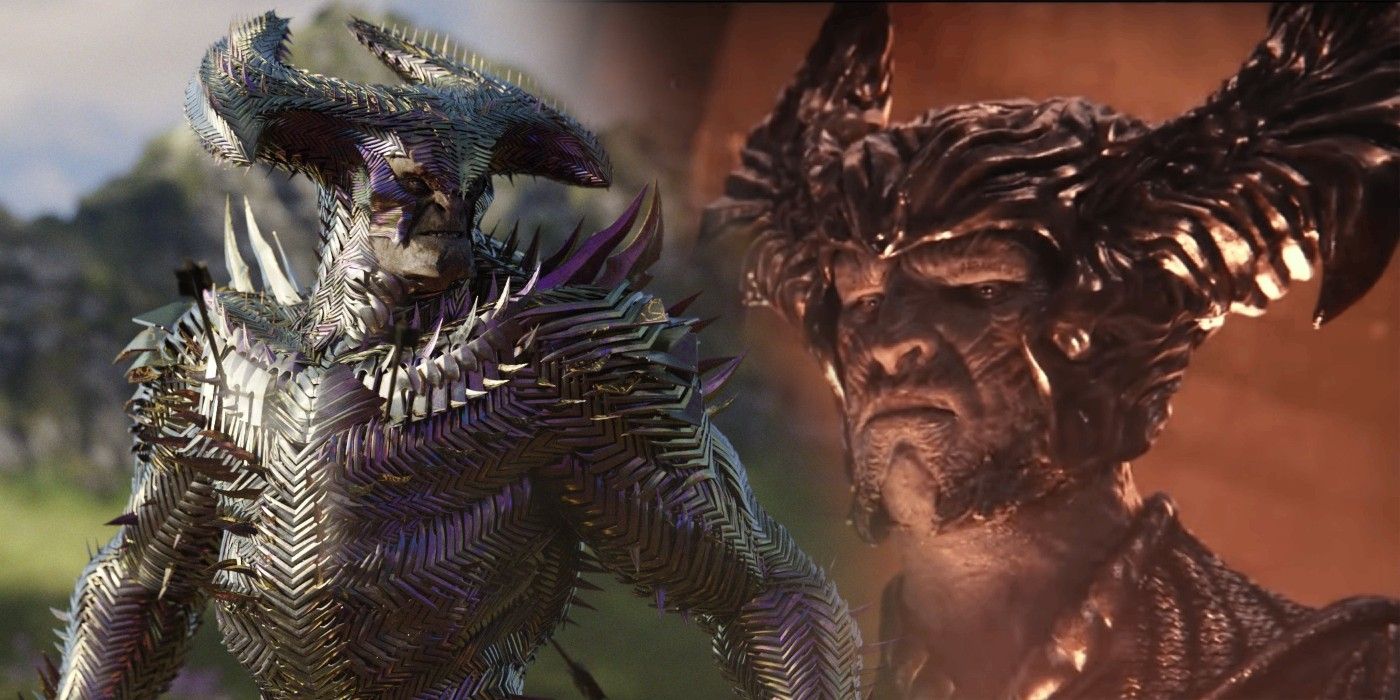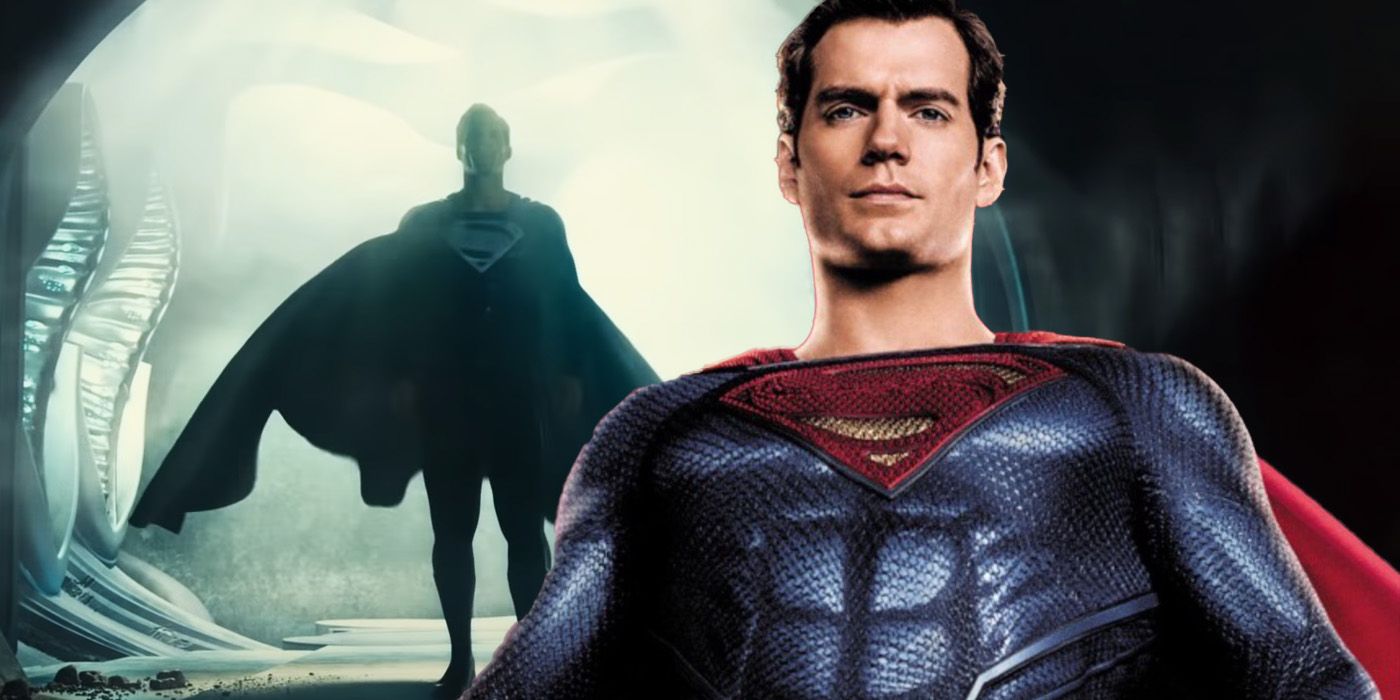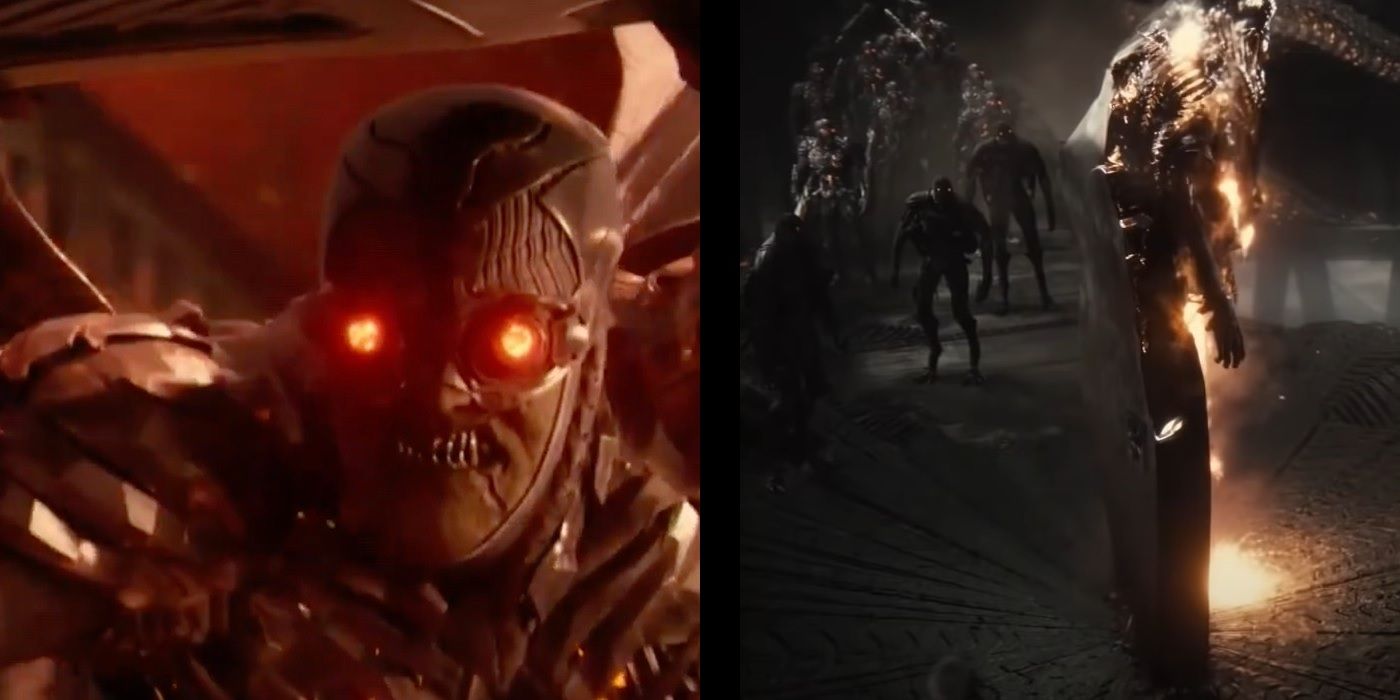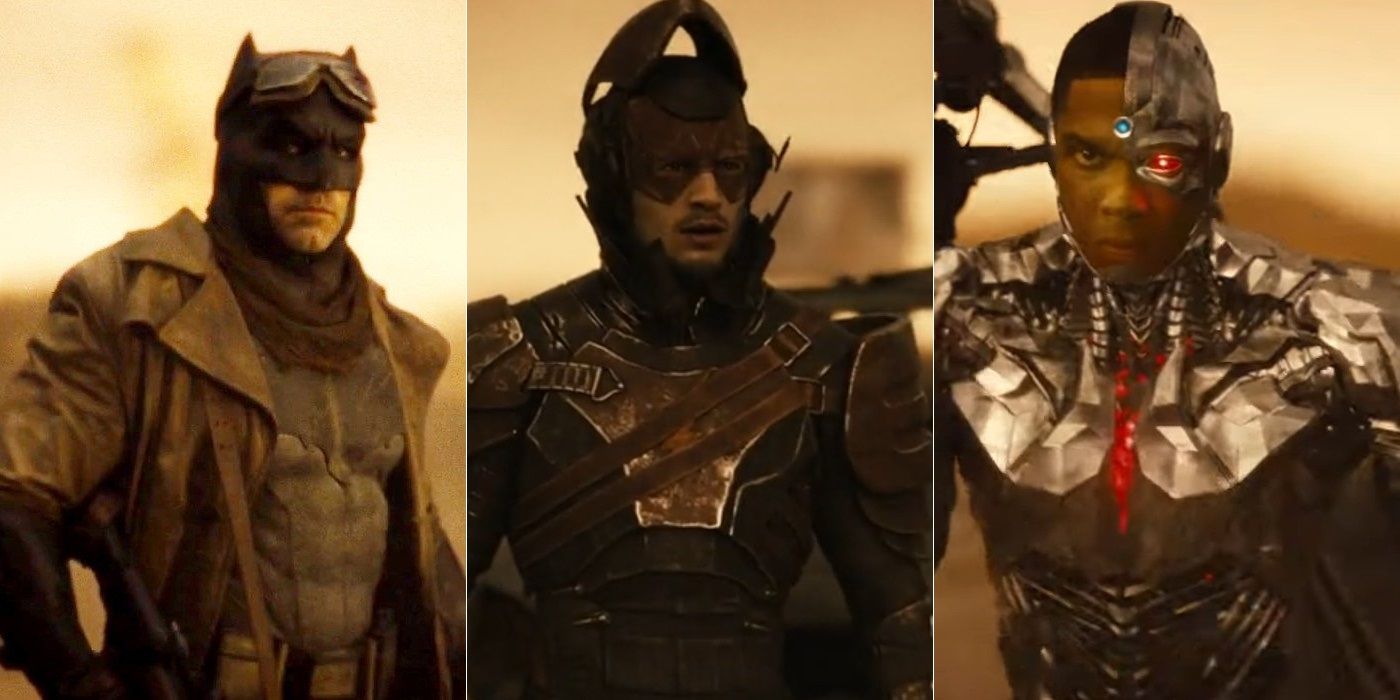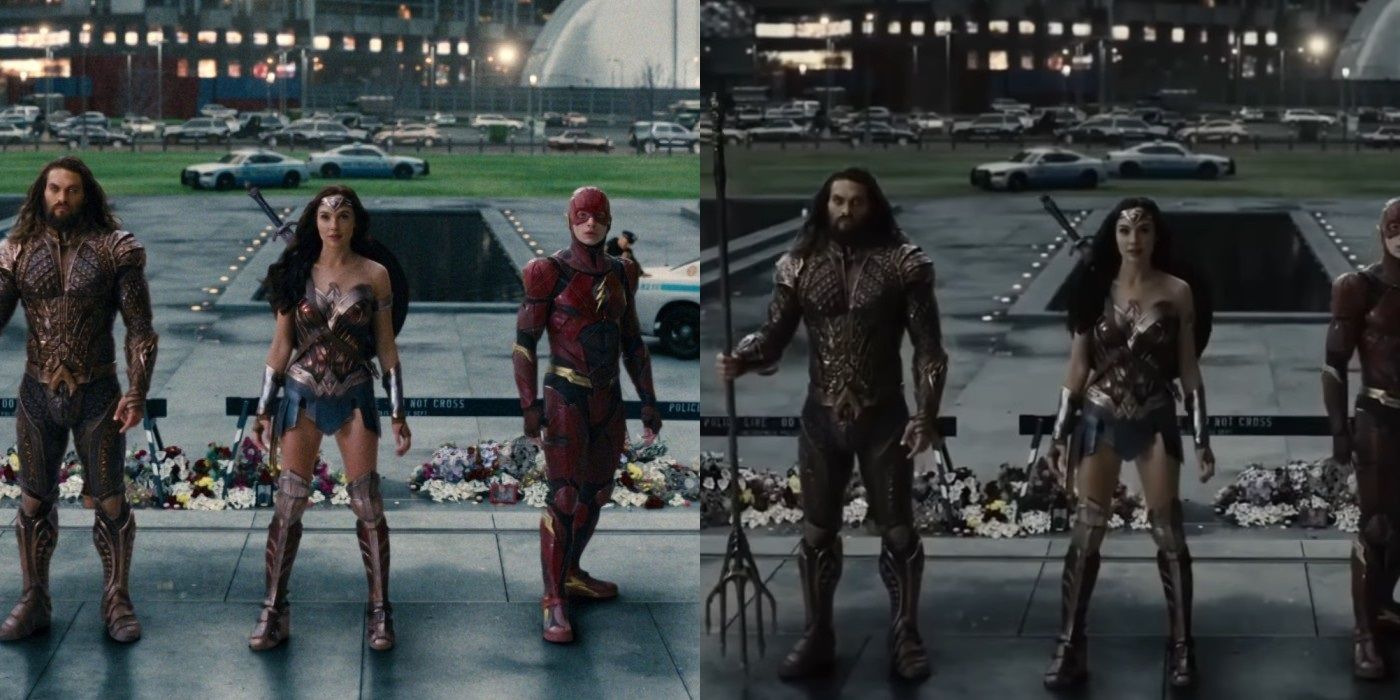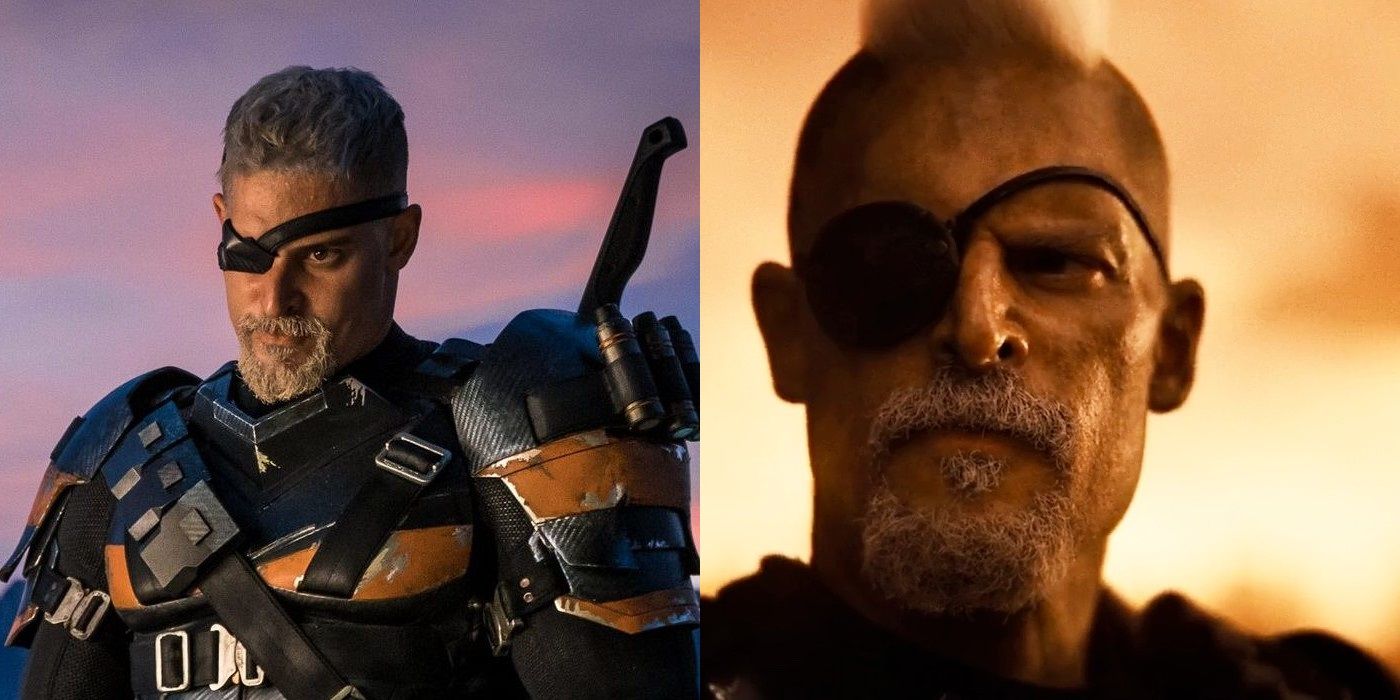Here are all of the major character appearance changes in Zack Snyder's Justice League. After the universally disliked 2017 Justice League theatrical cut was meddled with by Joss Whedon, HBO Max offered Zack Snyder an opportunity to restore his vision with the 4-hour Zack Snyder's Justice League. The Snyder Cut is essentially a completely different movie, with major alterations of plot, character, visuals and tone. Most changes represent Snyder undoing what was changed after his departure - reinstating Darkseid as the overarching villain, for example. Others were implemented after the Snyder Cut's official confirmation, with the director using his newfound freedom to explore ideas he couldn't before, such as Joker in the Knightmare timeline.
Zack Snyder's Justice League is a huge visual departure from 2017. The lighting of entire sequences is shifted to a darker, more intense atmosphere, adhering to Snyder's desire for a brooding DCEU, as opposed to the lighter world Warner Bros. leaned towards. But the sky isn't the only thing getting a makeover. Zack Snyder's Justice League revamps the designs of numerous major characters, including those within the Justice League itself, supporting figures, and villainous folk.
It's hard to describe the following changes as anything other than considerable improvements, and the updated designs contribute to the positive reception Zack Snyder's Justice League has been afforded. These are the characters who changed most since 2017.
Steppenwolf's New Design
The biggest wholesale design change in Zack Snyder's Justice League is, unsurprisingly, the character whose appearance seemed to evolve most dramatically during production - Steppenwolf. The Justice League villain was once a monstrous, horror-based creature, before being toned down considerably for 2017's Justice League. Opting for something more humanoid, the theatrical cut's Steppenwolf is more or less a man, albeit with gray, scaled skin and poor dental hygiene. Steppenwolf comes to Earth clad in a heavy suit of armor, complete with metallic skirt and horned helmet but, just like the villain's face, the alien-ness of his outfit is muted; an exaggerated take on something you might see in Game of Thrones.
Mercifully, Zack Snyder's Justice League reworks every single aspect of Steppenwolf's look. The softer, human facial features of 2017 are thrown out and replaced by physiology closer to a shark. Steppenwolf treads a thin line between humanoid alien and creature in the Snyder Cut, and falls far closer to the early concept art drafted before Warner Bros.' "lighten up" missive was passed down. Even the skin tone has been adjusted, adding in some fleshier tones very distinct from 2017 Steppenwolf's stone-like skin. His armor has been overhauled too, replaced by a futuristic nano-tech suit covered with spikes, which serves to make Steppenwolf both more menacing and more other-worldly.
Superman's Black Suit
Although not quite as drastic as Steppenwolf's transformation, Superman is the other obvious recipient of Zack Snyder's makeover chair. Without a mustache to interfere with shooting, Henry Cavill's face looks as it should, free from the distortion of 2017's CGI. More importantly, Superman's iconic suit is drained of its color in favor of a black ensemble taken from Clark's Kryptonian fortress. Snyder has explained previously that Superman's usual red and blue gear is the public-facing, hope-inspiring costume of his ancestors, whereas the black suit is his family's personal getup. So when Clark awakens from his grave existentially confused, he stops dressing like the Superman of the people, and becomes Superman on his own terms instead. This mental growth is represented by the black suit, which Clark wears for the final battle of Zack Snyder's Justice League, and beyond.
Obviously, the Kryptonian black suit was absent in 2017's Justice League. Clark still wakes up on the wrong side of his casket, but he happily returns to being the same old Superman after being resurrected, pulling on the red pants like nothing ever happened. Snyder confirmed as early as 2019 that his intention was for Superman to don black throughout Justice League's entire third act, but this plan was abandoned following his departure. Again, this was most likely to avoid a dark tone, although the time-honored marketing power of the blue and red might've been a factor also.
More Diverse, Scarier Parademons
In both versions of Justice League, Parademons follow Steppenwolf to Earth, serving as minions on the villain's quest to rediscover the Mother Boxes. Plentiful in number and easily squashed, Parademons make perfect fodder for Aquaman to kebab, Wonder Woman to slay, and Flash to run away from. But the visual appearance of the Parademons is another change affected by HBO's Snyder Cut. First appearing in Batman v Superman: Dawn of Justice, a swarm of parademons attack Batman in the Knightmare timeline and, although brief, it's clear that varying types exist, with unique sizes and shapes among the throng of baddies. In the so-called Josstice League, the parademons are more uniform in nature - the same flying grunts with red-eyed goggles and vampire-like fangs.
Continuing the running theme of character design changes, Zack Snyder's Justice League serves to make the Parademons more aesthetically threatening. For starters, the diversity of Batman v Superman is restored, and the larger class of Parademon with longer, insectoid limbs are included too. Similar to Steppenwolf, this makes the creatures look more animal than human, but also helps the Parademons feel more societal. Interestingly, the green Parademon blood from 2017 has been replaced with red. The cartoon-ish green would've been part of the wider attempt to tone down Justice League, but the Snyder Cut's R rating had no such concerns.
Knightmare Batman, Flash & Cyborg
DCEU fans will be very familiar with Bruce Wayne in his Knightmare gear, having featured prominently in Batman v Superman. But since the post-apocalyptic Batman doesn't appear in Justice League 2017, his brown trench coat, goggles and machine gun still mark another design deviation for the Snyder Cut.
The costumes of The Flash and Cyborg are more or less identical between Justice League 2017 and Zack Snyder's Justice League, but only up until the Knightmare timeline, in which both receive an upgrade. Barry Allen's Knightmare costume (first glimpsed in Batman v Superman) is restored during the Snyder Cut's epilogue, and the audience sees more of the new, darker armor Flash has adopted post-apocalypse, complete with the time-traveling modifications made to his suit by Bruce Wayne. These include a mechanical helmet apparatus to go over the new red cowl, designed to protect Barry better while he's jogging through time. Since his biology is the unique combination of Mother Box technology and Silas Stone's mind, Cyborg's appearance goes predictably unchanged in the post-apocalypse, as few possess the ability to modify him. With that said, Victor Stone does now come equipped with an additional cannon in the back of his head, and grows robotic limbs that went unused in 2017.
Everything's Darker
Not strictly an alteration to any specific character's costume or design, the lighting of Zack Snyder's Justice League ensures almost every character catches the eye differently. Watch the 2017 and 2021 versions of Justice League side-by-side, and one of the first things you'll notice is how much darker virtually everything is in the Snyder Cut, with many key scenes (Superman's resurrection and the subsequent battle being one of the best examples), noticeably less bright. This means the superhero costumes of the Justice League members are generally less comic book-ish, largely free from bold, bright colors. The dimmer cinematography automatically makes every character more shadowy and serious compared to the theatrical cut, irrespective of whether their outfit is actually any different.
Deathstroke's New Look
Joe Manganiello made his DCEU debut in the post-credits of 2017's Justice League, clad in his comic-traditional black and orange armor. A re-jigged version of the same scene is tacked onto the end of Zack Snyder's Justice League, and while the orange in Slade's costume is slightly less vibrant, that's only because the contrast is scaled back on the scene as a whole. However, Deathstroke does get a fresh makeover in the Knightmare timeline alongside Flash and Cyborg, completely removed from the character's appearance in the theatrical cut. The future version of Deathstroke has cut his light gray crew cut into a neater, cooler mohawk. Apparently, this is to signify his march into certain death as part of Batman's new-look Justice League, like a warrior shaving their head before battle. Slade Wilson also comes with new armor; darker and free from orange, because the post-apocalypse is serious business, and a more pirate-y eye patch.

